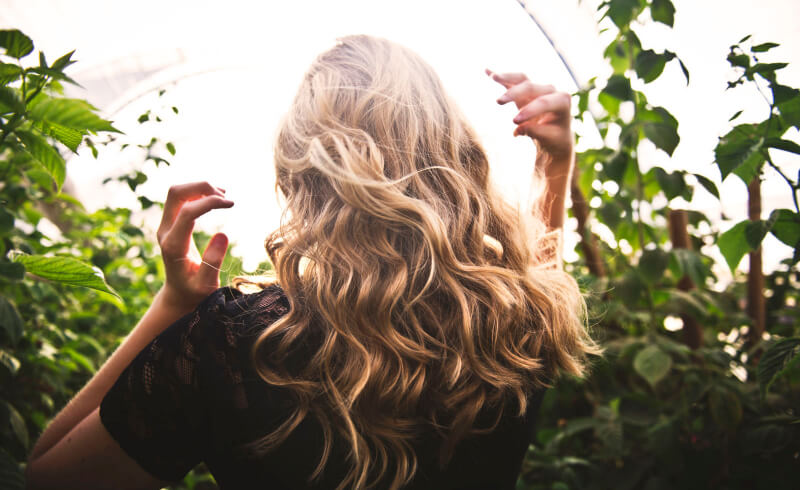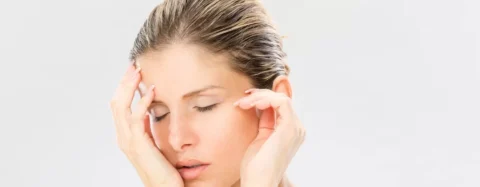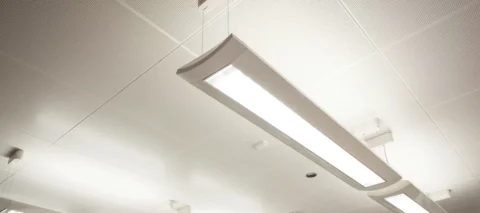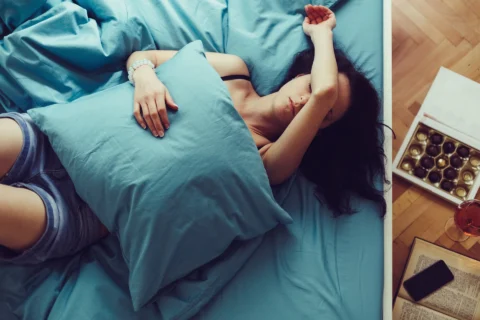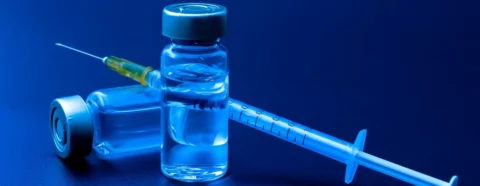A head full of healthy hair is a definite sign of beauty, but healthy hair fades in most people by their 30s or 20s at the earliest. Hair that was once naturally long, shiny, and luxurious can become dull, broken, and thin. This is why more women are turning to Botox for its hair-rejuvenating effects.
So what does Botox do to your hair? Whether you opt for Botox for hair treatments or Botox scalp injections, Botox treatments for the hair can revitalize unhealthy hair and help revive its fuller look. The way this works depends on the type of Botox for hair treatment you choose.
How do you know which Botox hair treatment you need, or whether Botox is the right treatment for your hair? Understand first exactly what leads to damaged hair, other existing treatments on the market, and why Botox is the choice millions make every year.
Your Hair: Natural Changes, Damages, and Aging
Hairs are made of a type of protein known as keratin. These strands of keratin grow out of hair follicles or specialized cells in the scalp. Hair follicles act as the soil for our hair, providing the necessary nutrients and lubrication for the hair to grow and look healthy.
While hair follicles exist all around the body, they are most numerous and active on the scalp (which has roughly 100,000 hair follicles). These follicles work in cycles – hair growth, hair rest, and hair renewal. We lose around 50 to 200 strands of hair per day, ending a full hair strand cycle that takes three years to complete.
With no external factors considered, general hair loss is caused by the process slowing down as we age. The growth phases shorten while the rest phases lengthen. This is known as pattern baldness, which affects more men than women. When women do experience pattern baldness, it usually only affects about half of their hair.
How You Damage Your Hair Every Day
With that said, there are plenty of ways that we damage our hair every day without realizing it, adding to the unhealthy, dull look we seek to treat. Here are some of the ways you damage your hair:
- Stress: Stress can lead to both breakage of hair and hair loss. Too much stress leads to hair follicles becoming dormant, meaning that any hair that is in the growth phase will break off mid-growth (source).
- Heat: Too much heat applied directly to your hair can lead to long-term damage to the hair cuticle. This is most commonly seen in misuse of hair heating tools, such as curling irons, flat irons, and hair dryers. However, your hair can also experience heat damage from too much exposure to the sun.
- Over-Washing: Some people produce more natural oil (sebum) on their skin and in their hair, tempting them to wash more than necessary. Washing your hair several times per day can exhaust your hair follicles, leading to slower growth and hair loss.
- Pulled Hair: For those who like to tie their hair back with hair ties or bands, this can be very damaging to the hair cuticles. Tying the hair back applies unnecessary stress to the hair and the scalp, more than it can handle.
- Lack of Maintenance: While it may seem counterintuitive to cut your hair when you are trying to achieve fuller and longer hair, it’s actually better to opt for a regular trim. Hair trims are necessary to free your hair of any split ends, which generally lead to hair breakage.
- Over-Styling: Too much work and styling on your hair causes hair cuticle to break down, leading to long-term hair damage. This includes sessions of coloring, straightening, relaxers, perms, and more. It is recommended that you give your hair at least 8 weeks of rest between professional hair styling sessions.
- Harsh Drying: Most people dry their hair after a shower by vigorously rubbing a towel over their hair, but this damages your hair in two ways: 1) The motion is usually too rough; and 2) Your hair is extra vulnerable when it is wet. For best drying practices, just wrap your hair in a towel and leave it there for a few minutes to absorb the remaining water.
As we damage our hair and become older, we experience loss of volume, more frequent hair breakage, slower growth, increasing dryness, rougher texture and dullness (due to less protein production), and general thinning (source).
Botox can help to ease these symptoms and in the best cases, even reverse them. But is Botox the best treatment for you?
Non-Botox Hair Treatments on the Market
Hair treatments offered by hair salons and spas generally consist of keratin treatments. Keratin treatments are known to increase the shine and smoothness of your hair, with some products also claiming to increase fullness and general hair health.
But hair keratin treatments can be confusing for those who are new to the market. With various products and named techniques offered by most salons, how do you know where to start with keratin treatments?
The truth is that there are only really two types of hair keratin treatments: the traditional Brazilian blowout, which works to straighten the hair and soften the texture, and various smoothing treatments, which aim to add shine to the hair and remove any frizz, without changing the hair’s natural texture.
What Is a Keratin Treatment? How Does It Work?
Keratin is the protein that makes up hair strands, and all keratin hair-smoothing treatments have this as their primary ingredient. However, what distinguishes the various smoothing products is the other ingredients involved in the process, with keratin playing a minor role with most treatments.
Traditional treatments involving keratin use a solution that releases the formaldehyde gas, which flattens the hair by applying a kind of coat of armor over the hair which can last an average of three months.
Smoothing treatments work without the use of formaldehyde. Rather than sitting on the surface of your hair, smoothing products permeate the hair cuticle, creating a result that lasts stronger than formaldehyde without providing as powerful an effect.
Why Keratin Treatments Are Dangerous
The danger of keratin treatments is the chemicals used in the hair-straightening products. Most chemicals involved with keratin treatments are not FDA-approved, and one of the most dangerous chemicals that keratin hair treatment patients regularly expose themselves to is formaldehyde, the same chemical used by morticians to prepare corpses for funerals.
Pregnant women are strictly advised to avoid keratin treatments due to formaldehyde exposure. Formaldehyde can lead to a host of side effects, including asthma, allergies skin irritation, and various long-term cancerous conditions.
While some salons may claim that their keratin hair treatment products are “formaldehyde-free”, this claim is misleading. This is because of the nature of formaldehyde: even if it is not a present ingredient in the product, it can be created as a gas when other chemicals in the product are exposed to heat.
Many keratin treatment products have actually been identified by the Occupational Safety and Health Administration of the US (OSHA) as containing formaldehyde levels significantly higher than the permitted limit.
Downsides of Keratin Treatments
Aside from the dangerous addition of formaldehyde in the keratin treatment process, there are also a few other consequences from these hair treatments. These include:
- Hair Loss: Keratin treatments generally involve flat irons applied to the hair at temperatures equal to or higher than 450 degrees Fahrenheit. This causes severe heat damage to the hair that damages its natural internal keratin. Too many keratin treatments per year lead to excessive hair loss and hair breakage.
- No Showers: After a traditional keratin treatment, it is strongly advised that you avoid any excessive contact with your hair for three days. This includes showering and tying your hair back.
- Inconsistent Results: If you decide to push through with a hair keratin treatment, there is still no guarantee that you will receive the results you expect. Results vary from person to person when it comes to keratin treatments due to several factors, including the state of your hair, the flat iron’s temperature, how skillfully it was applied, and many more (source).
Botox Hair Treatments
So what is the difference between a Brazilian Blowout and hair Botox? While a Brazilian Blowout or traditional hair keratin treatment requires heating the treatment product into the hair, hair Botox involves no keratin at all, making it a much safer and oftentimes more effective hair treatment alternative.
There are two kinds of hair treatments involved when people refer to hair Botox: the Botox for hair treatment, and Botox scalp injections.
Botox for Hair Treatments
When people refer to hair Botox, “Botox for hair” treatments are generally the treatment that is being specified. Botox for hair treatments surprisingly don’t involve any botulinum toxin product at all. Instead, they incorporate AnimoMar C, a protein found in some species of fish, which produces similar relaxing effects to the hair that Botox is known for (source).
Unlike keratin treatments, the protein involved in Botox for hair treatments is absorbed into the hair, rather than just coating over the outer layer of the hair. This allows it to produce faster and more distinct results than traditional Brazilian Blowouts, with none of the chemicals or other negative side effects.
If you’re interested in Botox hair treatment and you need more information, visit our Botox page.
Frequently Asked Questions
What does Botox do to your hair?
Botox for hair is a topical treatment, meaning it is applied on the hair directly (which is why some people can do it themselves at home). This treatment manages frizzy hair, helping to straighten hair while returning a more youthful shine to it.
The micro-keratin formula produced by AnimoMarC penetrates the hair and fills in thin and broken areas. This produces a fuller and more lustrous look.
How long does Botox last in your hair?
While a keratin treatment will last just 2-3 months, a hair Botox treatment can last over 4 months. This is because the ingredients in hair Botox are absorbed into the hair, producing longer-lasting results. To keep results lasting as long as possible, make sure to use shampoo with little to no sulfate.
How much does hair Botox cost?
A single Botox for hair treatment can cost anywhere from $150 to $300, depending on your location and the experience of your salon. While this costs more than an average keratin treatment, remember that Botox results last much longer as well.
What can I expect from the results?
Generally, you can expect these results from hair Botox:
- Healthy hair fibers
- Less frizz in your hair
- No split ends
- Shinier and softer hair
- Nourished and healthier overall look to your hair
Can hair Botox be applied at home?
Yes. While it would be better to have a professional apply your hair Botox, the treatment can be done at home. Make sure to have a good understanding of the different hair Botox brands, so you know the proper application and any exact requirements necessary for treatment.
Application steps generally include:
- The initial wash
- Blow-dry the hair
- Mix just 5 cc of your chosen hair Botox product with about 50 mL of water
- Create sections in the hair and massage the product into each section thoroughly
- After treating the hair, apply heat to it
- Wash the hair without shampoo, removing most of the product
- Dry the hair with a blow-dryer (source)
How is it applied?
A Botox for hair treatment is quick, painless, and easy. A treatment begins with shampooing the hair to engage the scalp’s hair cuticles. This also helps prepare the hair for conditioning. After thorough shampooing, Botox is applied to the hair and is massaged deep into the strands and the scalp.
The duration of your session will depend on the length and fullness of your hair, but it will generally last anywhere from 20 to 90 minutes.
What are Botox for hair side effects?
As with any kind of hair treatment, there is a small risk of an allergic reaction for some people. If you believe that you might be allergic to the product, do your best to avoid any skin contact with the product.
Is Botox for hair safe?
With no dangerous chemicals such as formaldehyde used in hair Botox products, you can rest assured knowing that it is safe to apply in your hair. The only risk is a possible allergic reaction, which can be negated by ensuring little to no skin contact with the product.
Botox Scalp Injections
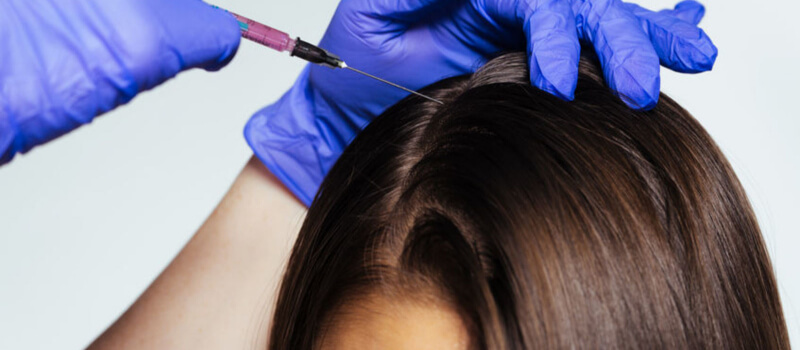
Unlike Botox for hair, Botox scalp injections involve actual Botox. Botox is injected straight into the patient’s scalp, with the goal being to relax the muscles at the top of the head. With relaxed muscles, the scalp becomes a more conducive environment for hair growth and rejuvenation given the increased nutrient delivery and enhanced blood flow in the area.
There is some evidence that Botox scalp injections can stimulate hair growth, but most studies have found that scalp injections are only effective if the nearby hair follicles are still functional.
Hair Botox Aftercare Tips
While hair Botox is an effective treatment method on its own, there are certain ways you can help improve results, making your hair look healthier for a longer time from a single treatment. Here are some tips for hair Botox aftercare:
Wash gently after treatment
While you don’t necessarily have to avoid the shower for 3 days like with keratin hair treatments, it would help to wash gently for 48-72 hours after your treatment for the best absorption rate. Try to wash less frequently than usual for the next few days; if you feel that your hair is becoming greasy, apply dry shampoo to it.
Find the right shampoo
Regular shampoo won’t cut it after a hair Botox treatment, because they contain sulfate and some chemicals that can be counterproductive to the absorption process.
Check for shampoos, conditioners, and moisturizers that advertise no chemicals or sulfate. Coconut, macadamia oil, and argan oil are great ingredients for your hair products.
Wear a hair mask
A weekly hair mask after a hair Botox treatment can do wonders for the efficacy of your results. You will want to find a hair mask that is sulfate and parabens free; a homemade hair mask would work fine as well. Try creating your own hair mask out of coconut oil, for example.
Throw out cotton pillows
Cotton is known to dehydrate the hair, so resting on a cotton pillowcase all night long is the worst thing you can do for your hair right after hair Botox treatment. Microfiber pillowcases are a great and inexpensive alternative.
Which Botox Hair Treatment Should I Get?
Most Botox hair treatments that you hear about are hair treatments that involve no Botox at all, but still boast results that last longer and show more prominently than more traditional forms of hair treatments on the market.
While Botox scalp injections are less popular, they have also shown interesting results and can help people who feel that other hair treatments don’t work on them.
Contact us at My Ethos Spa to find out what hair treatment is best for your hair, and how you can begin your path to a fuller and more lustrous head of hair today.

